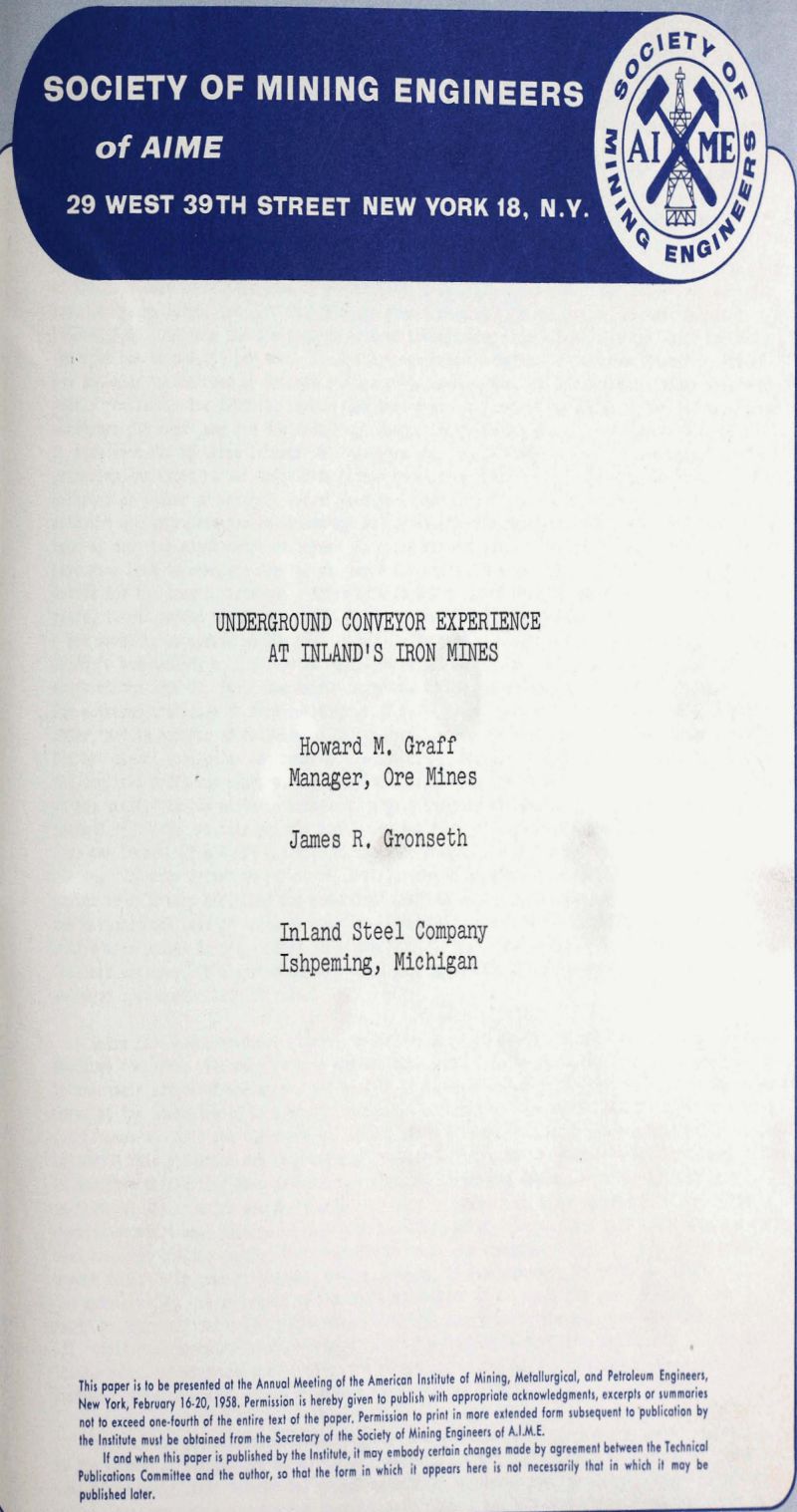The Inland Steel Company operates five underground iron mines in the Lake Superior District. The two largest of these, from the standpoint of productive capacity, are the Sherwood Mine in Iron River and the Bristol Mine in Crystal Falls, both on the Menominee Range of Michigan. It is at these two mines that we have had our principal experience with belt conveyor installations underground.
There have been, however, several special problems in connection with the operation of the inclined conveyor. The most serious one was slipping of the drive pulley. This was not apparent in the early stages of operation, but as the loads increased due to the increase in tonnage being mined at the lower level, we began to have a lot of trouble. Frequently some fine wet ore would get between the belt and the drive pulley and cause the belt to stop while the head pulley continued to turn. This situation can very quickly generate enough heat to damage the belt and cause a fire, in addition to shutting down production.
Most of the other problems connected, with the operation of this conveyor system are related to the method of loading ore on to the belt conveyor at transfer points and draw points. The broken ore, after being sized through bar grizzlies with 9″ openings, passes through storage raises from whence it is drawn onto a gathering conveyor belt. For small tonnages a simple gravity chute is used with stopper boards in front which can be raised and lowered by the operator to regulate the flow
Another method of loading a conveyor is directly from a scraper by means of a scraper slide and skirt board combination or a short chute. This method is used during development work and in some mining contracts where it is not necessary to accumulate ore in a storage raise for measuring purposes. Although this is a very easy method of loading, it is not too satisfactory because unless the scraper is operated very carefully, the load comes to the conveyor in surges.
Regular maintenance work on the belts themselves if so, are of primary importance. Since the belts are the most expensive part of the installation, they must be kept in condition to handle large tonnages in order to achieve a low capital cost per ton of material handled. Prefer loading and, good, alignment must be achieved, to reduce belt wear, and impact idlers should be placed, under loading points where heavy chunks are handled. We have one man assigned to patrol the entire system constantly, greasing, checking equipment and inspecting the belts. He turns in a daily checklist inspection form covering all parts of the conveyor system. When belt damage is noted, it is repaired, at the earliest opportunity to prevent progressive damage.
In summary, the following are the general requirements for a successful underground conveyor system:
- The ore limits must be fairly regular and well established, so that the haulage drifts can be straight with a minimum of transfer points.
- The ore should, be fairly free-running and. not contain an excessive number of heavy, sharp chunks.
- The layout must permit continuous flow of the ore from the mining place to the shaft by conveyor without the need of rehandling by any other means.
- The productive capacity of the mining places feeding upon the conveyor system must be large enough to derive the cost advantage of the conveyor’s capacity.
- Very careful attention must be paid to the design of feeders and. transfer points and there must be set up a comprehensive system of inspection and regular maintenance.
- There must be a means of reducing the top size of the ore pieces to about 9″ to 12″ before it is placed on a conveyor.
- If an incentive method, of payment to miners is used there must be a means of measuring the column of the ore produced before it is drawn on to the conveyor or there must be a means of weighing the ore on the belt before it is intermingled with ore from other contracts.

